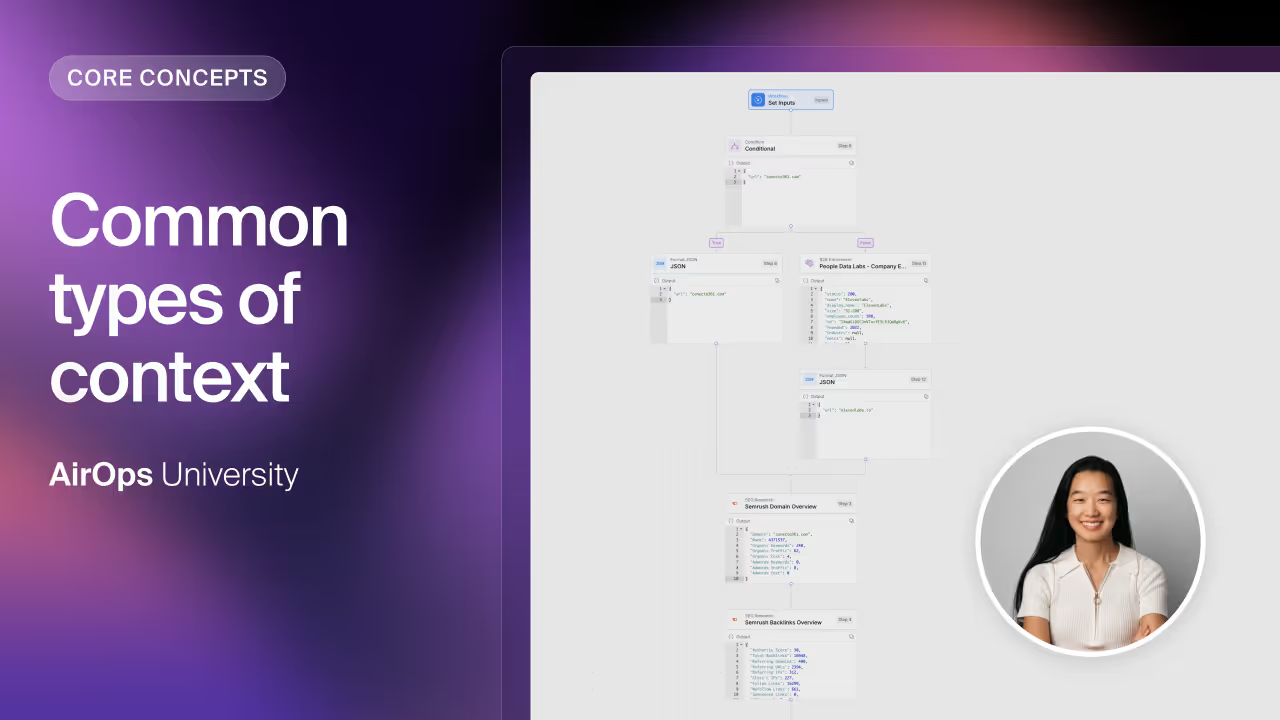Common types of context
You can group data into two buckets: internal data and external data. Internal data comes from your own brand assets, and external data is sourced from the internet or third-party APIs.
Internal data
Internal data helps the model adopt your brand’s unique perspective, tone, and style. There are three main sources:
Brand kits
Brand kits store all of your brand’s key information in a reusable way, so you don’t have to copy and paste every time you build a Workflow.
- Setup: In AirOps, go to Brand Kit, select Data, then click the + to add a new brand kit.
- Auto-populate: We generate generic brand info, but you must modify each field to reflect your real positioning, tone, and writing rules.
- Sections to fill out:
- Brand information
- Customer profile
- Competitors
- Brand positioning
- Writing style (tone of voice, writing rules)
- Writing sample (the best example that shows your brand’s voice)
Knowledge bases
Knowledge bases chunk and index large documents so you can search and retrieve only the most relevant pieces.
- Chunking: PDFs or docs are split into ~1,000-token chunks.
- Retrieval: You’ll get semantically similar chunks, ideal for tasks like internal linking (e.g., providing a sitemap of URLs and finding the best matches).
- Consideration: If you need to preserve the entire context of a long document, chunking may not be suitable—brand kits deliver static, full-context information instead.
Databases
Connect real-time data from your own warehouse into AirOps.
- Supported warehouses: Postgres, Snowflake, BigQuery
- Setup path: In AirOps, navigate to Settings → Warehouse setup and follow the prompts.
External data
External data keeps your content current and fact-based. Common methods include:
Google Search and Scraping
- In a Workflow, use the Google search step and the Webpage scrape step (left sidebar) to pull live web results.
SEO Tools
- Search for SEMrush steps to integrate keyword research directly into your Workflow.
Online Models
- Off-the-shelf LLMs may not have internet access. For live data—like current events or weather—use an LLM step and pick a model with internet access (e.g., Perplexity, GPT-4 Search, Gemini 2.5 Pro).
External APIs
- If AirOps lacks a built-in integration, add a Code step to call any public API and bring that data into your Workflow.
All in all, brand kits and knowledge bases are the key ways to provide internal data. And generally you’re going to get live information via Google search and online models. In future videos we’ll go in depth into how to modify the brand kits, how to use each of these steps, but for now hopefully this was a good preview of how we add context to workflows.

